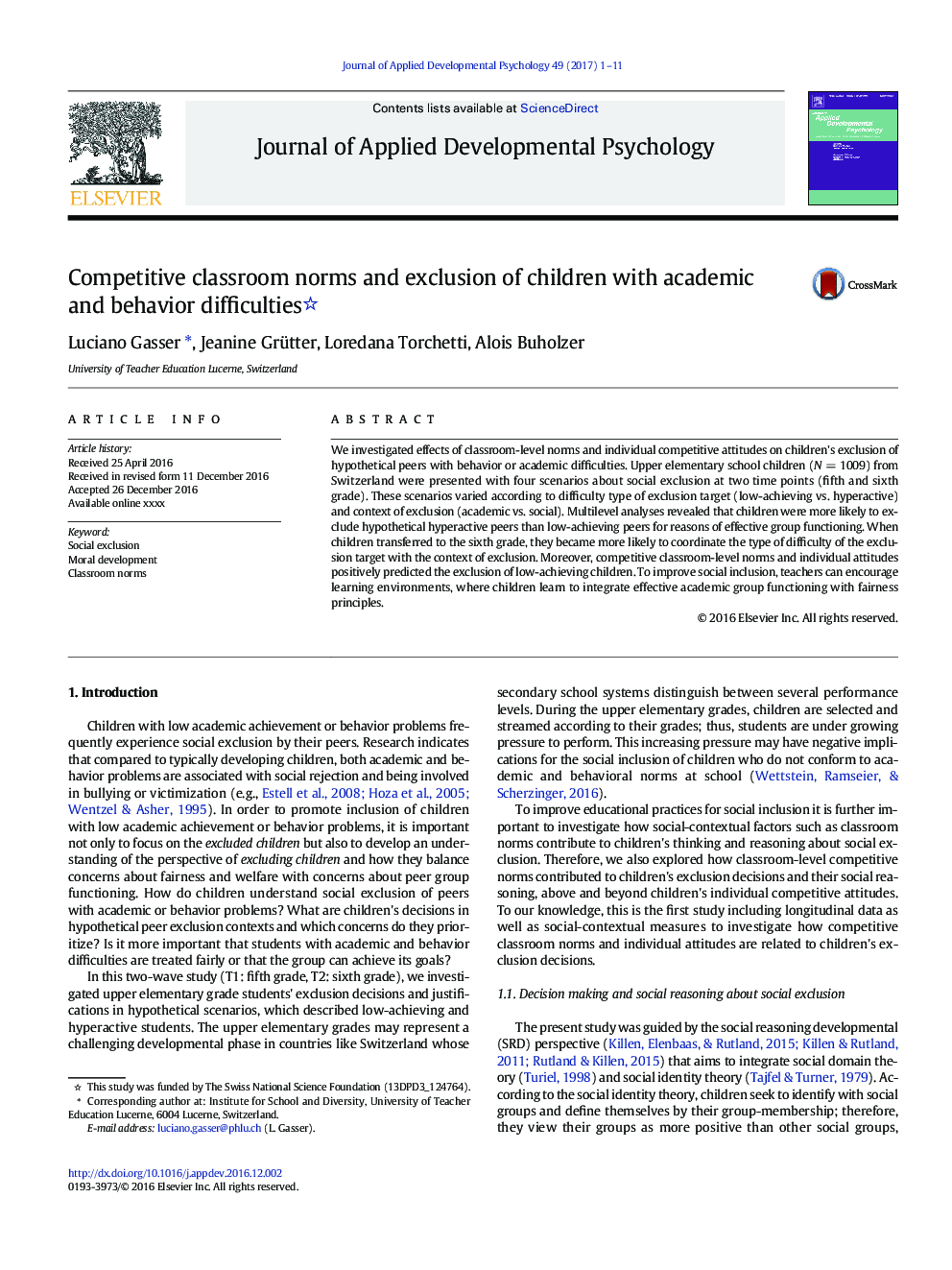| Article ID | Journal | Published Year | Pages | File Type |
|---|---|---|---|---|
| 4939157 | Journal of Applied Developmental Psychology | 2017 | 11 Pages |
Abstract
We investigated effects of classroom-level norms and individual competitive attitudes on children's exclusion of hypothetical peers with behavior or academic difficulties. Upper elementary school children (NÂ =Â 1009) from Switzerland were presented with four scenarios about social exclusion at two time points (fifth and sixth grade). These scenarios varied according to difficulty type of exclusion target (low-achieving vs. hyperactive) and context of exclusion (academic vs. social). Multilevel analyses revealed that children were more likely to exclude hypothetical hyperactive peers than low-achieving peers for reasons of effective group functioning. When children transferred to the sixth grade, they became more likely to coordinate the type of difficulty of the exclusion target with the context of exclusion. Moreover, competitive classroom-level norms and individual attitudes positively predicted the exclusion of low-achieving children. To improve social inclusion, teachers can encourage learning environments, where children learn to integrate effective academic group functioning with fairness principles.
Keywords
Related Topics
Social Sciences and Humanities
Psychology
Applied Psychology
Authors
Luciano Gasser, Jeanine Grütter, Loredana Torchetti, Alois Buholzer,
